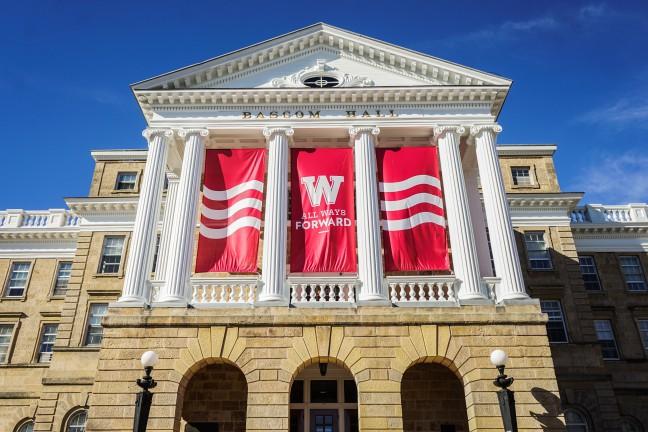In an attempt to keep faculty members from leaving, University of Wisconsin administration invested nearly $23.6 million to fund retention offers in the 2015-16 academic year.
External recruitment of faculty members increased by 40 percent in the 2015-16 academic year, Sarah Mangelsdorf, UW provost and vice chancellor for academic affairs, said in a media call Friday. UW was successful in retaining most of those recruited because it took extra measures like making better retention offers and funding professors’ research.
This is the first year UW has compiled information on outside offers and faculty retention in a formal report.
UW faces ‘chaos, uncertainty’ from state budget cuts in upcoming semesters
There could be a number of reasons behind why some faculty members stay and some leave, Mangelsdorf said. Some faculty chose to leave because the new position would be better for their career. But a more competitive salary was the most common reason for why some faculty accepted offers elsewhere.
In an op-ed in the Milwaukee Journal Sentinel, UW geography professor Jack Williams said UW was in the bottom third of faculty salaries nationwide. Mangelsdorf said some faculty received offers with salaries 30 percent higher than their current ones, which could have encouraged many to leave.
Despite receiving better offers, Mangelsdorf said 77 percent of those recruited chose to stay. Williams said he chose to stay in UW because of the environment. He said he believes in UW’s mission and that the university was the best place for him to pursue his research.
“They love Madison, they love their colleagues and they may choose to stay even if they’re not earning the highest possible salary,” Mangelsdorf said.
Blank looks to increase out-of-state tuition to help fund faculty
Mangelsdorf said $1.86 million of the $23.6 million invested went toward improving faculty salary. The rest of the money was a one-time investment to support faculty scholarships, teaching assistant fees, equipment costs and other costs. Most of this money came from donations, Wisconsin Alumni Research Foundation endowments and some taxpayer dollars.
Much of the money also came from funds UW already had and was reallocated to fund retention offers, Mangelsdorf said. No new money went into funding these offers.
Mangelsdorf said UW has also received negative media attention recently, which could have made it a strategic time for recruiters to reach out to UW faculty members. University of Arizona and University of Minnesota were the most prominent recruiters.
Jocelyn Milner, vice provost and director of academic planning and institutional research, said faculty retention’s impact on students is unclear. The student population has been growing but administration is planning and monitoring section sizes closely so that there are few or no waitlisted students.
“[Waitlists are] a concern we have but we’re trying to best serve our students,” Milner said.
Chancellor Blank fears division between faculty, Board of Regents
Mangelsdorf said it is uncertain whether the increase in external faculty recruitment will last or not. She said UW will do “everything it can” to retain its faculty using the resources it has.
Emily Hamer contributed to reporting for this article.













